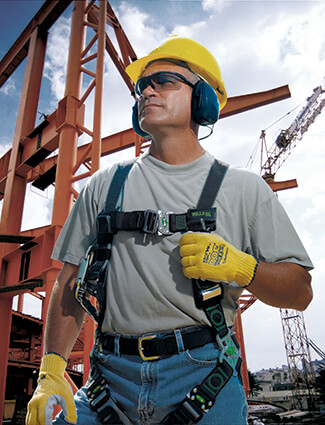
Fatality and injury numbers in construction saw a significant increase in the past fiscal year. Focusing on reducing electrical, fall, struck-by, crushing, welding, and other hazards in steel erection, the U.S. Department of Labor's Occupational Safety and Health Administration (OSHA), the North Central States District Council of Ironworkers, the Ironworkers District Council of St. Louis and Vicinity, and Iowa OSHA are teaming up for a two-year safety campaign. With more than 6.5 million workers, effective communication, education, training, and utilizing best practices are an important part of safety in the construction industry to reduce deaths and injuries.
A 2017 National Safety Council survey of safety professionals in construction showed that 47% of respondents felt afraid to report safety issues and 51% of respondents said that management does only the minimum required by law to keep employees safe.
"Workplace safety is achieved when everyone works together to recognize hazards and follow safety protocols and procedures," said Kimberly Stille, an OSHA regional administrator. "We look forward to sharing best practices, educating employers and employees, and ensuring that safety is not compromised on the job."
Preventing Frequent Hazards
 The OSHA-Ironworkers powerhouse partnership aims to improve construction safety by promoting strong, clear communication. A few of the main causes of steel erection accidents, according to OSHA, are:
The OSHA-Ironworkers powerhouse partnership aims to improve construction safety by promoting strong, clear communication. A few of the main causes of steel erection accidents, according to OSHA, are:
- Improper use or failure of fall protection
- Collapses during landing or removing a load
- Workers struck by objects while walking or working under a load
- Slips, trips, and falls
Construction specific labels and signage can enhance safety on jobsites of all sizes. Fall protection was listed as the number one reported violation in OSHA's top 10 for fiscal year 2017. In the construction industry, there were 6,072 fall protection violations. To help prevent future falls, use signs to describe hazards or risks near open sides, warn where not to stand, specify what PPE is required, identify where personal equipment is kept, and illustrate proper use of personal gear. Keep PPE organized, readily available, inspected often, and in good condition.
In the next safety meeting, help workers understand fall protection standards and learn how to reduce falls by referring to DuraLabel OSHA Fall Protection Guidelines and Standards Infographic. Unfinished walking paths and slippery surfaces are a challenge in construction. Foot traffic paths near moving vehicles also change constantly. To help employees secure their footing and avoid slips, trips, and falls, use anti-slip floor marking tapes.
Constructive Communication
Identify dangers on a construction site by developing a well-thought, effective training program that provides workers with safety resources and information. DuraLabel has a variety of industry best practice educational resources and solutions. Alert workers to hazards, promote safe behavior, and reduce workplace accidents by installing custom, site-specific safety labels and signs using thermal transfer DuraLabel industrial label and sign printers. Whether environments call the need for materials that can handle high-abrasion, varying temperatures, or resist grease, ensure those workplace safety signs can always be seen, understood, and remain in place with over 50 DuraLabel labeling supplies to choose from.
Related Resources

Easy Ways to Enhance Loading Dock Safety
Warehouses are busy work environments. Keep loading dock workers moving efficiently and safely using these ...
Read
3 Ways to Reinforce Training and Improve Safety
Training employees isn't a one and done type event. Training should be continuous as job tasks and hazards ...
Read
4 Tips to Enhance Loading Dock Safety
There are more than 4.2 million material movers in the U.S., most of which work in transportation and ...
Read.png)





